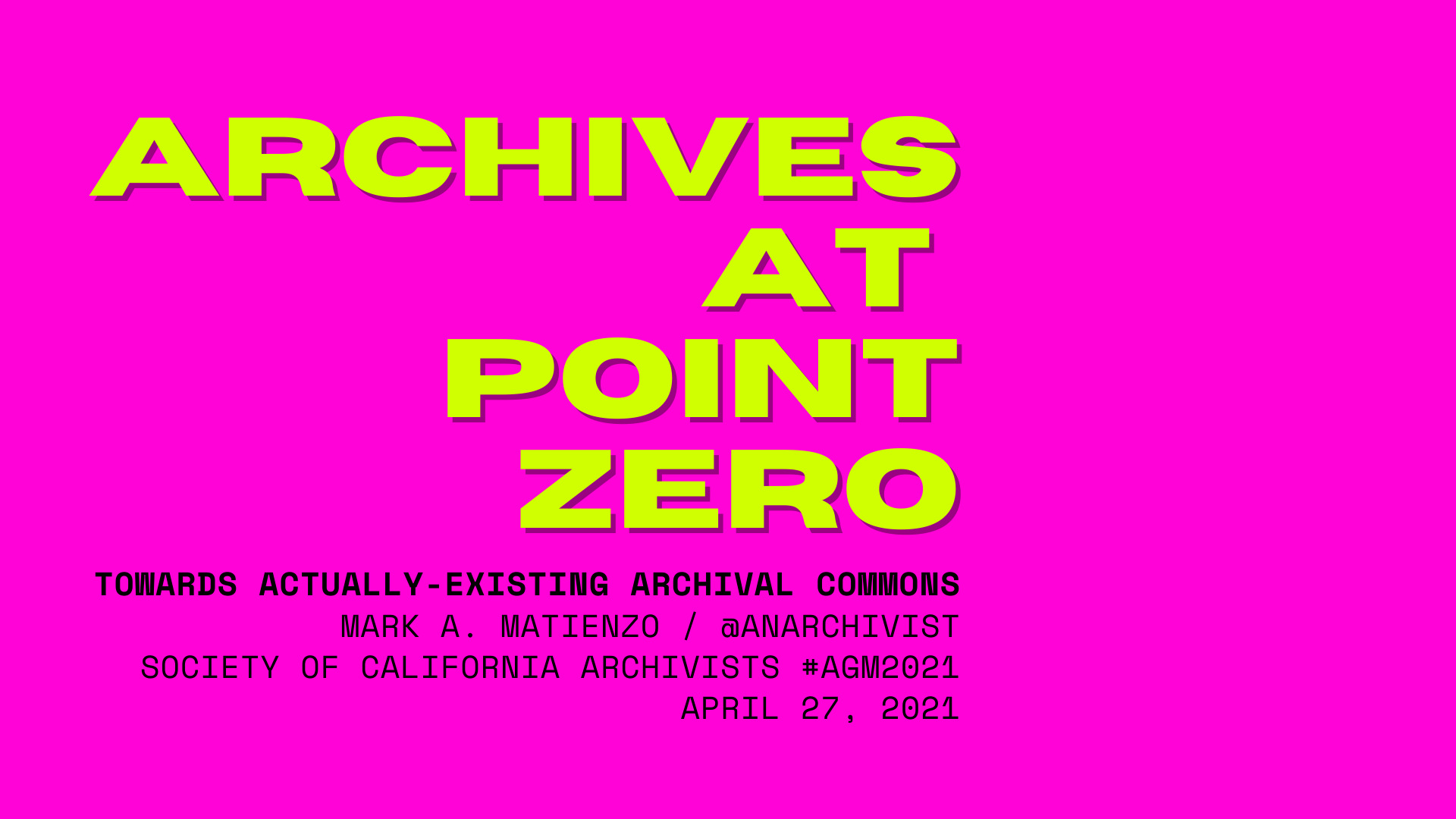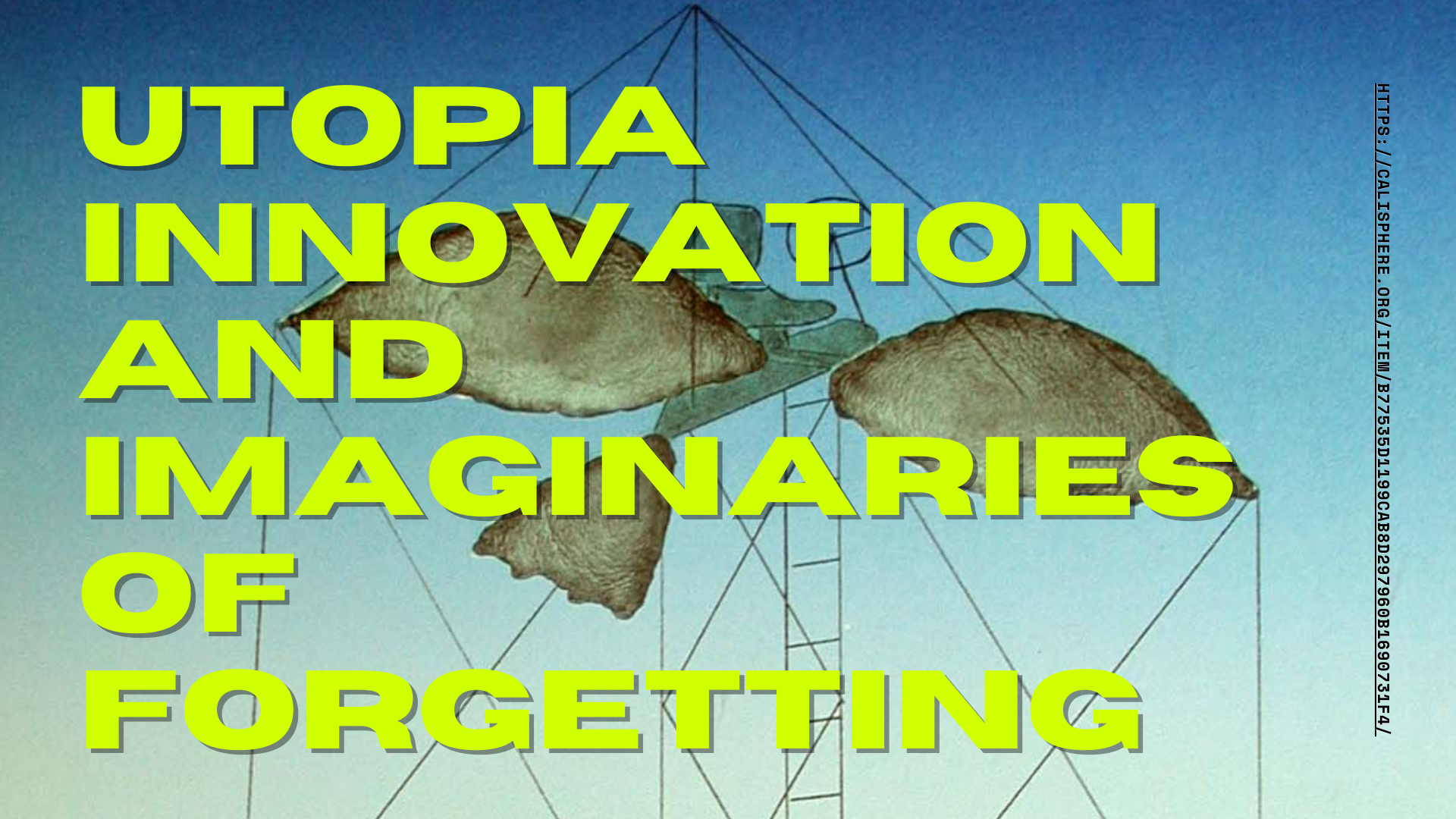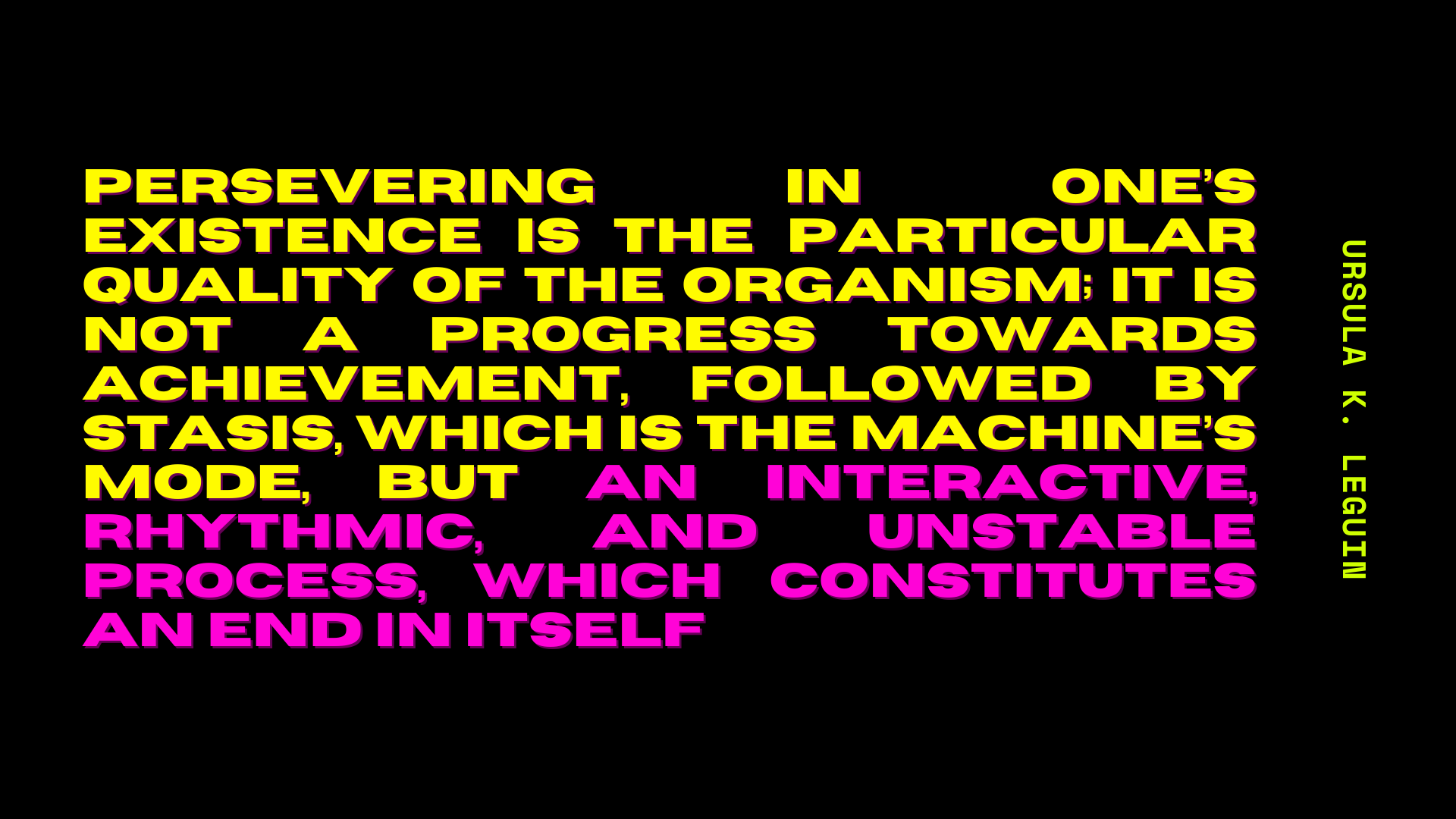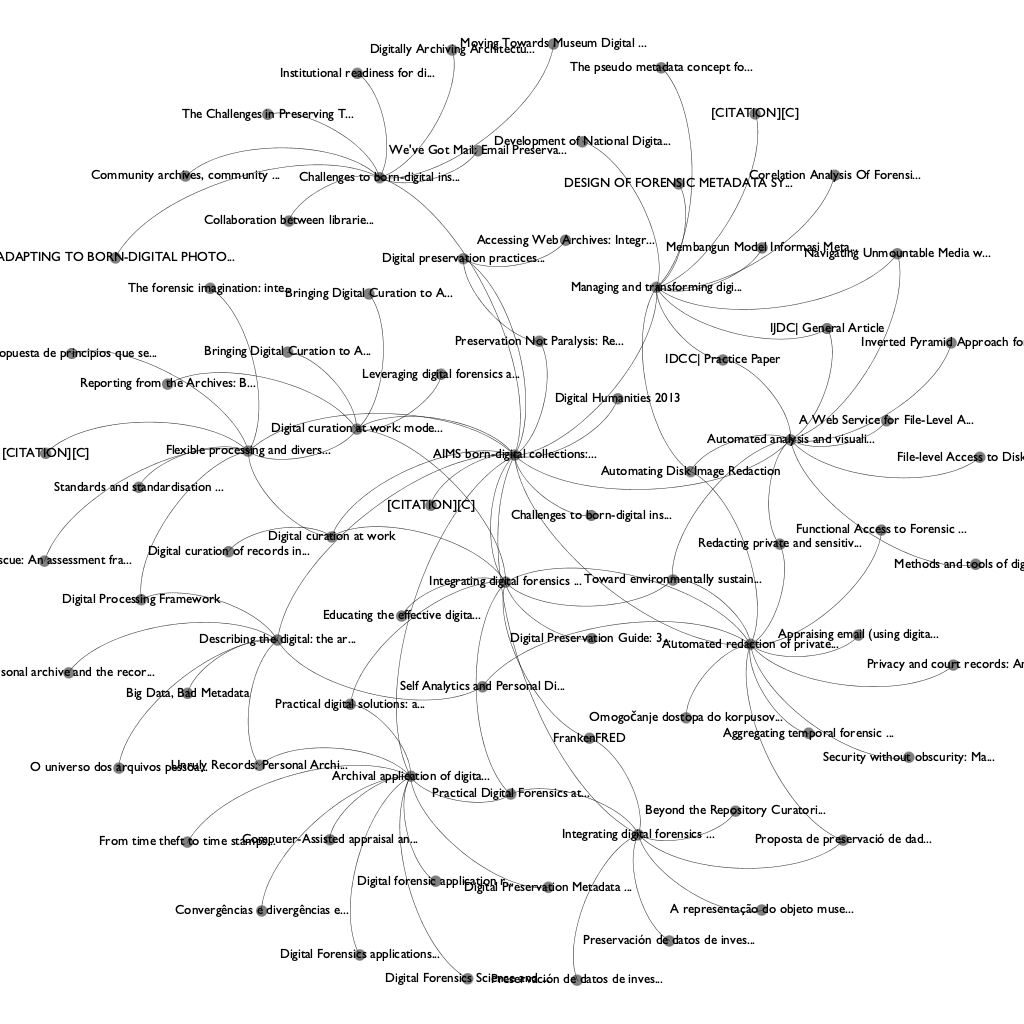Notes
-
🔖 Digital Library Software Developer, Access and Discovery Team (3 positions) | Stanford Libraries –
We’re hiring for three software developer positions, at junior, mid-, and senior levels, to join our team at Stanford Libraries. Remote-friendly; great colleagues, and rewarding projects. Apply by May 28 for earliest consideration!
-
Really enjoying leaning into writing with Ulysses - it’s kind of a dream come true from the standpoint of working with Hugo. It’s nice on desktop/iPad, but wish the Working Copy integration on iOS were slightly smoother.
-
Because my Sourcery post was so controversial^W popular I had to adjust the Webmention configuration to show more replies. Nice problem to have, I guess?
-
Yesterday, I gave the keynote at the #agm2021. The session was recorded but not yet freely available. I’m hoping to rework the text for publication, but on request, I’m willing to share the text of my talk, so contact me accordingly.

The title was ‘Archives at Point Zero: Towards an Actually-Existing Archival Commons.’

Here’s a mindmap of related topics from when I was first asked to give a talk for the canceled 2020 Western Archivists Meeting.

I used lots of images from Calisphere, like this one.

I also used a lot of Ursula K. Le Guin quotes.
-
🔖 Interview with Jon Corbett - esoteric.codes –
Great longform discussion with Jon Corbett, an Indigenous computational media artist, and creator of Cree# and the Indigenous Computing Framework.
I started to see how the living and dynamic characteristics of culture can be represented as digital structures on which to build my programmatic language; and is also one of the reasons I needed to define an “Indigenous Computing Framework”. I needed to be able to describe the system in organic terms with respect to the cultural awareness of the programming platform, so things like language sensitivities, cultural practices, digital object behaviours, etc… could be presented with this kind of “meta-language” that carries the cultural metaphoric representations and relationships to the system and extended programmatic functions.
His extended abstract for Programming ‘18 also shares more of his research framework.
-
🔖 Week in Review Leadership Comms | Lara Hogan –
I was recently referred to Lara Hogan’s post on Week in Review writeups for teams that are internally public:
Though the teams who reported to me were the primary audience for this doc, I kept it internally-public, meaning that anyone at the company could read and comment in it. I found that some other managers just weren’t talking about hard things that were happening, or addressing rumors that were going around, or giving heads-ups on changes, and often people on my teams would share my Week in Reviews with people on other teams, so that they could have the info too. I invited comments on the document, and didn’t “resolve” or delete comments I received, because I wanted folks to be able to see the answers to questions out in the open.
Her additional insights on how to use them to address “Why Don’t They Just…?” questions are also super, super useful.
-
🔖 R.A. Hawley, "Middle Management" –
The appeal of the centrist escape hatch for designers isn’t hard to grasp. You fall in love with something — skyscrapers, letterforms, robots, websites, cars — and dedicate yourself to its craft, only to run headlong into the cruel depravity of its mode of production. Caught between the thing you love and are paid to do and the political implications of doing it, a trap door appears beneath you: What if capitalism could be designed around? One could infer that the seminal impulse of design-as-politics is bargaining with the nature of politics, as one might do with grief — a compulsive search for loopholes, in which the underlying problems are swapped out for satisfying puzzles.
-
experimenting with @edsu’s etudier to visualize some citation networks of vanity searches in Google Scholar.

This citation network is for the AIMS project’s final report.
-
🔖 Foreign Objects X Eliza Collin X Genie Kausto An Introduction to the Bell System (2021) –
Still amazed by these #plan9 jumpsuits from the Foreign Objects piece for Further Experiments in Arts and Technology.
In An Introduction to the Bell System, we have made 5 embroidered jumpsuits exploring the history and working culture of the Computing Sciences Research Center at Bell Labs, between 1970-90. Though famous for the success of the Unix operating system and surrounding tools, the group’s cult status online is buoyed by a much wider array of playful, experimental and sometimes anarchic work, in an era where the identity of “tech worker” was yet to be defined. This project is a form of fan art: each suit considers a strand of research from this era at Bell through the projects, in-jokes and ephemera.

-
🔖 Embracing radical prioritization –
Great post from Michael Della Bitta, DPLA’s Director of Technology:
If the team takes on too many tasks, there’s a risk of not making tangible progress on any of them, leaving the organization no further along than when we started. So there needs to be a concerted accounting of what work is potentially on the table, and a process to scope, prioritize, and ultimately reduce the work to a finite and achievable set of tasks. …
However, this process is a difficult one to undertake. Everybody working at DPLA has a mile-long list of projects we might try, and watching them be sidelined for other work can be painful. Still, we’re never saying “no, not ever” to things that we leave off the 90-day plan, we’re just saying “not now.”
